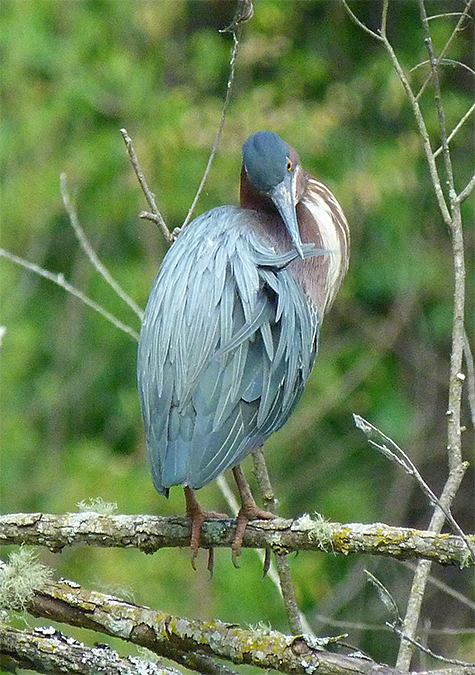
Pausing to rest, the green heron in the above photo is performing an extremely important job for a bird, preening. Most birds have a preen gland, or uropygial gland, on their back, at the base of the tail just forward of where the tail feathers enter the body. You can’t see it unless you move the feathers aside, but its there. The gland contains an oily substance used to clean and coat the bird’s feathers. The bird reaches back with its bill, gathers up oil and goes to work on the feathers.
It’s not simple vanity that causes a bird to preen, although preening does help them show off their colors during the breeding season. Clean and straight feathers are essential to birds, they can’t fly without feathers. Well maintained feathers also help insulate the bird from cold, heat, and shed water.
Here are some photos of our local green heron preening.






The next time you see a bird reach back towards its tail and start pulling and digging at its feathers, you’ll know what that bird’s doing, making itself flightworthy, helping itself stay warm or cold (depending on the season), and making itself look good.
This made me wonder about birds’ beaks. I only thought about beak shape in terms of feeding, but I wonder if there’s a beak shape/feather shape relationship too?
After thinking about this, my answer was too long to fit into this space. See here: The Shape of Things
Thanks,